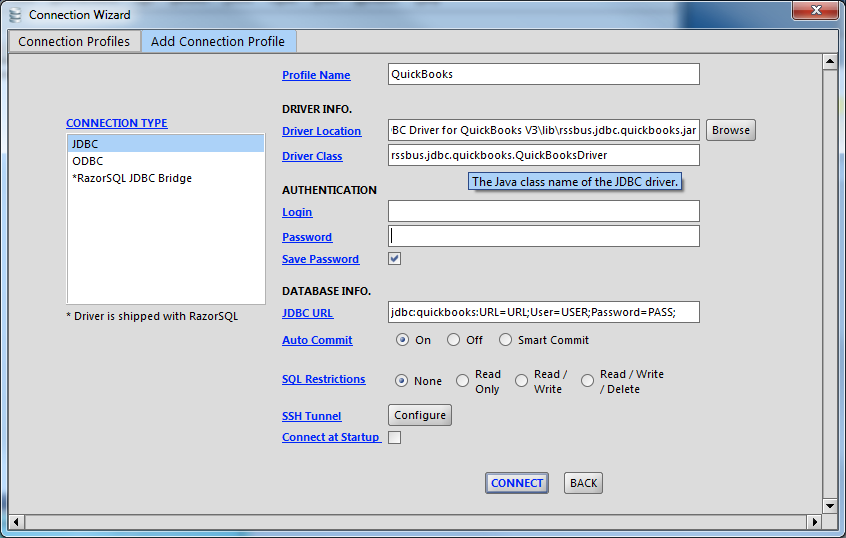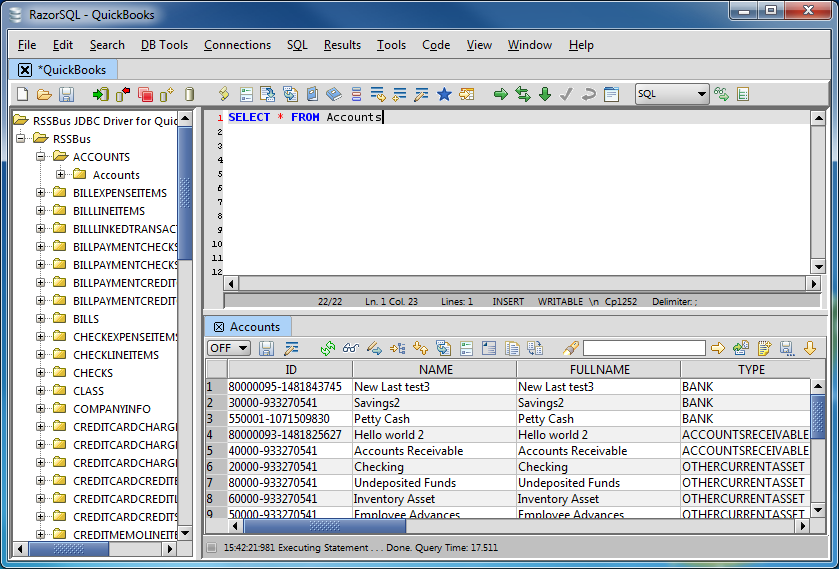Model Context Protocol (MCP) finally gives AI models a way to access the business data needed to make them really useful at work. CData MCP Servers have the depth and performance to make sure AI has access to all of the answers.
Try them now for free →Connect to RSS Feeds in RazorSQL
Connect to RSS from wizards and query RSS feeds from the GUI in the RazorSQL database management tool.
The CData JDBC Driver for RSS enables standards-based access from third-party tools, from wizards in IDEs to data management and analysis tools. This article shows how to connect to RSS using wizards in RazorSQL.
Create a JDBC Data Source for RSS Feeds
- Open the RazorSQL application and, in the Connections menu, select Add Connection Profile -> Other -> JDBC.
- In the Connection Wizard that appears, set the following properties:
- Driver Location: Set this property to the path to the lib subfolder in the installation directory.
- Driver Class: Set the driver class to cdata.jdbc.rss.RSSDriver.
- Username: Enter the username. (This property can also be set in the JDBC URL.)
- Password: Enter the password. (This property can also be set in the JDBC URL.)
JDBC URL: Enter connection parameters. The JDBC URL begins with jdbc:rss: and is followed by a semicolon-separated list of connection properties.
You can connect to RSS and Atom feeds, as well as feeds with custom extensions. To connect to a feed, set the URL property. You can also access secure feeds. A variety of authentication mechanisms are supported. See the help documentation for details.
Built-in Connection String Designer
For assistance in constructing the JDBC URL, use the connection string designer built into the RSS JDBC Driver. Either double-click the JAR file or execute the jar file from the command-line.
java -jar cdata.jdbc.rss.jarFill in the connection properties and copy the connection string to the clipboard.
![Using the built-in connection string designer to generate a JDBC URL (Salesforce is shown.)]()
A typical JDBC URL is the following:
jdbc:rss:URI=http://broadcastCorp/rss/;

Query RSS Feeds and Select Tables
After establishing a connection, the wizard will close and the connection will be available in the connections panel. You can then query the tables.



